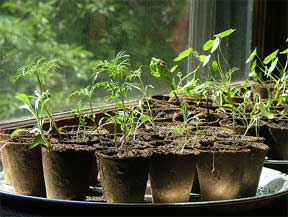In 1926, Long before 2,4-D and DDT became known to gardeners, a Formosan scientist, E. Kurosawa, made an important discovery. He observed a peculiar fungus (Gibberella fujikuroi) disease that affected rice. The first symptom was a greatly accelerated growth rate and the diseased seedlings grew much taller than the healthy ones.
Kurosawa found that sterile, cell-free solutions from the fungus when sprayed on rice seedlings produced the same over-growth as that caused by the disease. Twelve years later (1938) at the University of Tokyo a team of research workers, led by T. Yabuta and Y. Sumiki finally isolated the plant growth stimulator.
It was given the name “gibberellin A” after the fungus which produced it. Important as this discovery was, it aroused little attention. Little did the Japanese or the rest of the scientific world then realize the vast potentiality and versatility that gibberellin might have for large segments of the plant kingdom.
The war followed, and not until 1950 did anyone outside of Japan pay any attention to gibberellin. In fact, not until early in 1956 did it begin to attract the serious attention of plant scientists, and then in but a few of the experiment stations and universities of the western world.

Commercialization
Commercialization of gibberellin followed almost immediately. In February of 1957 it was introduced and distributed for use on flowering and ornamental plants before virtually any field or greenhouse testing. Even scientific observations were still in their beginning stages. Soon at least six chemical companies in the US and one each in Britain and Japan were in production.
A number of formulated preparations of liquids, powders and aerosols already confront the gardener. Pure gibberellin is a white powder produced in much the same way as penicillin. The same equipment was used and there was no longer a production problem.
Its effects initially in every plant which was treated provided that adequate amounts of the chemical are used and that it penetrates into the growing tissues. The elongation results mostly from an increase in cell length. By now it has been found that a great many herbaceous and woody plants show this increase in growth.
Dwarf garden peas and sweet peas when treated grow like tall kinds, and bush beans develop the twining vines of pole varieties. Dwarfism is virtually eliminated in many bush and slow growing plants. Most deciduous shrubs, however, show continuous growth only if foliar sprays are repeated at weekly intervals.
Increased Yield
The increased size of plants is often accompanied by an increase in yield as in the case of Spathiphyllum flowers. This is likely a consequence of increased photosynthesis from a larger leaf area.
In many plants, however, the overgrowth produced by gibberellin , is not desirable or may have damaging effects. Stems are often weakened to the point where they need support and become hard to manage. Severe losses may occur from plants blowing over. The lighter green foliage is often objectionable.
The time of flowering in peas, beans, tomatoes and broccoli may be hastened only a few days with gibberellin. But the substance has a pronounced effect on speeding up biennials, most long day annuals, and some short day flowering plants.
Petunias have been made to bloom during mid-winter. Size and lasting quality in some flowers may also be favorably influenced. More uniform ripening in tomatoes has been reported. Spraying the flower buds of grape clusters has resulted in young fruit with larger individual berries and a more desirable open bunch.
Some ornamental shrubs grow with great vigor following treatment but fail to develop fruit or berries. Dormancy growth may be stimulated in the dormant buds of many plants.
Contributed by SH Wittwer
